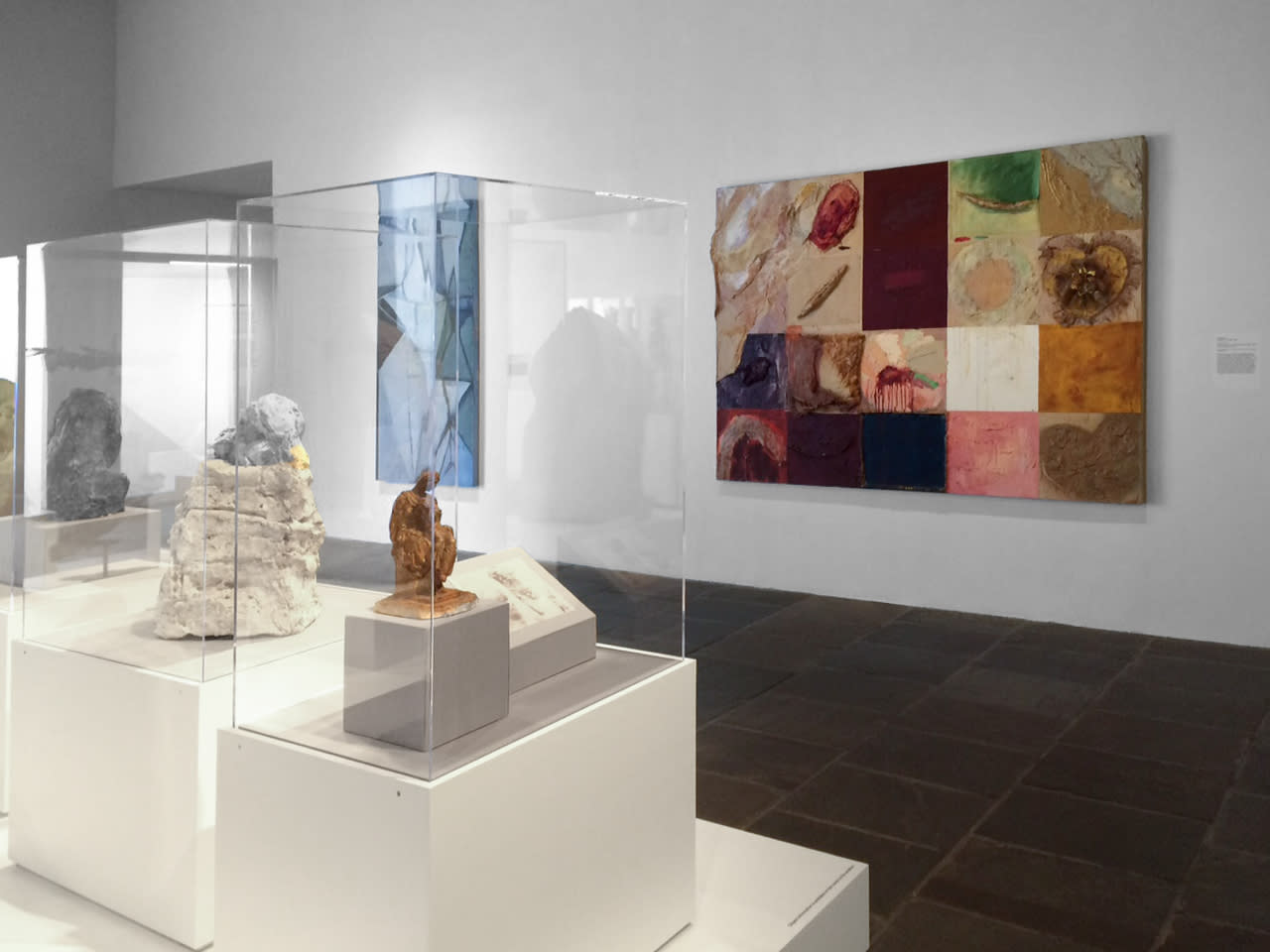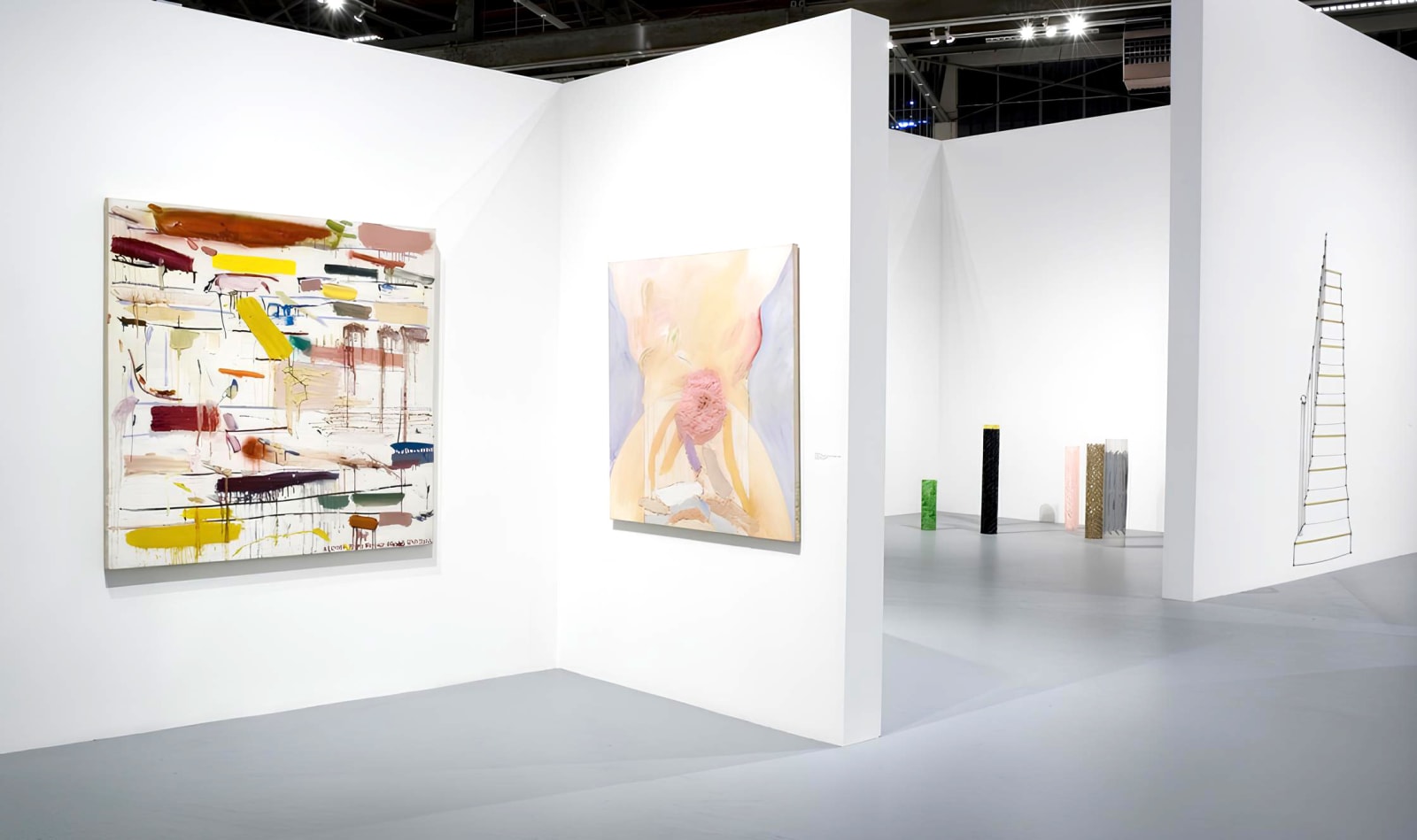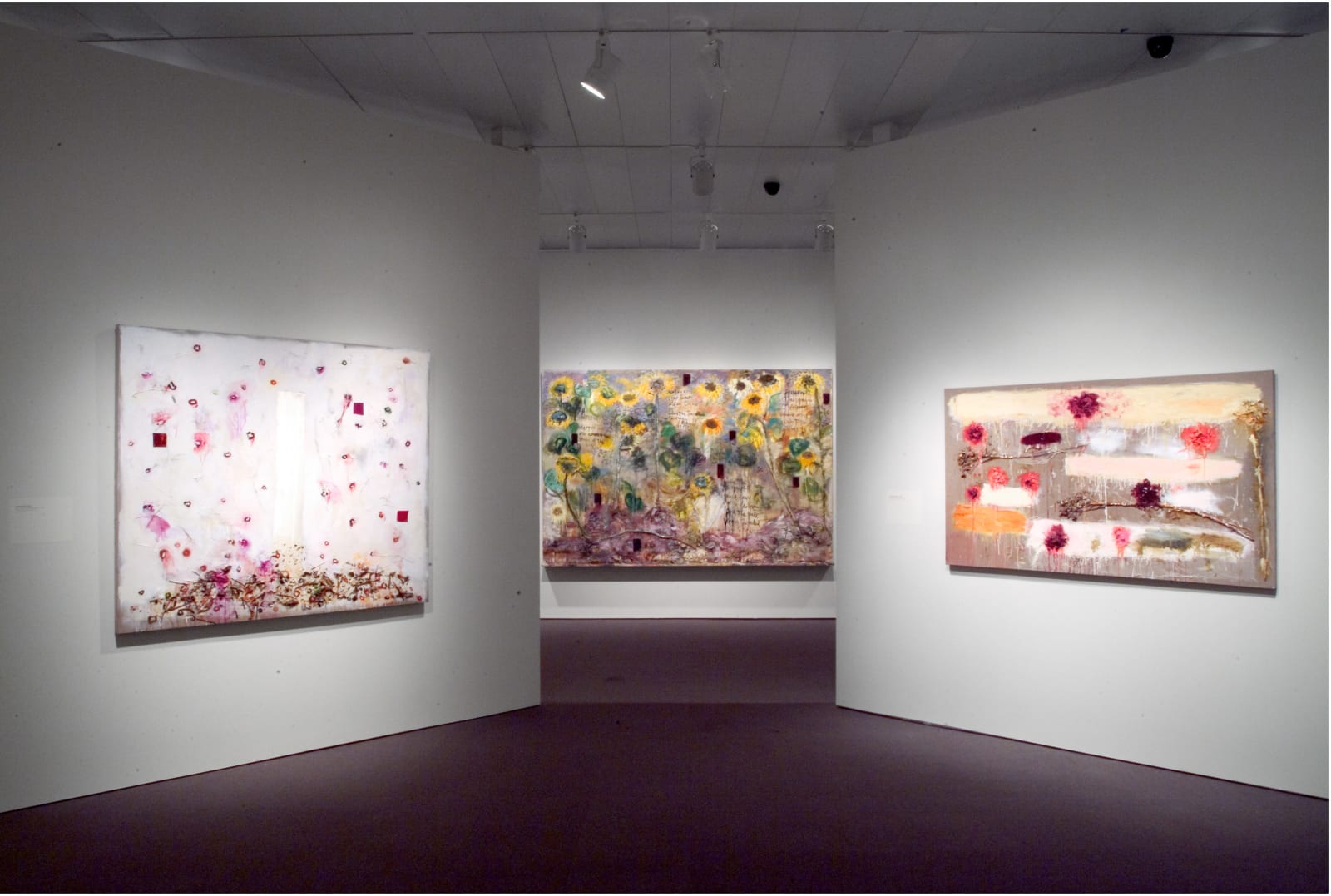

Joan Snyder
Overview
I am always seeking clarity, a purity, an essence, but have never been willing to sacrifice the ritual, the need for the deep, the rich, the thick, the dark – the wild wake of the brush and the organic application of materials – and always working consciously to be in control and out. — Joan Snyder
For six decades American artist Joan Snyder has reimagined the narrative potential of abstraction through her paintings, drawings and prints. She first garnered widespread recognition in the early 1970s with her Stroke paintings that dissect the most fundamental of painterly gestures: the brushstroke. Fuelling abstraction with autobiography, she consciously worked against the male-dominated conventions of Minimalism, Abstract Expressionism and Colour Field painting, which were prevalent in the New York art scene into which she emerged. ‘I wanted more in painting, not less,’ she says. ‘I wanted to tell a story, have a beginning, a middle, an end... to do something else, something much more intense, personal and complex.’ Building a vocabulary of recurring personal motifs – from roses and breasts, to ponds and mud, totems, screaming faces, grapes, scrawled words, cherry trees and moons, pumpkins and sunflowers – she pushes the formal possibilities of paint while developing a complex materiality through an additive process of collaged materials. Snyder’s rigorous interrogation of abstraction is underpinned by her feminist outlook, as she centres ‘the essence of feelings of a female body’ to carve out new terrain in contemporary American painting.
For six decades American artist Joan Snyder has reimagined the narrative potential of abstraction through her paintings, drawings and prints. She first garnered widespread recognition in the early 1970s with her Stroke paintings that dissect the most fundamental of painterly gestures: the brushstroke. Fuelling abstraction with autobiography, she consciously worked against the male-dominated conventions of Minimalism, Abstract Expressionism and Colour Field painting, which were prevalent in the New York art scene into which she emerged. ‘I wanted more in painting, not less,’ she says. ‘I wanted to tell a story, have a beginning, a middle, an end... to do something else, something much more intense, personal and complex.’ Building a vocabulary of recurring personal motifs – from roses and breasts, to ponds and mud, totems, screaming faces, grapes, scrawled words, cherry trees and moons, pumpkins and sunflowers – she pushes the formal possibilities of paint while developing a complex materiality through an additive process of collaged materials. Snyder’s rigorous interrogation of abstraction is underpinned by her feminist outlook, as she centres ‘the essence of feelings of a female body’ to carve out new terrain in contemporary American painting.
Encompassing the guiding principles and themes of her practice, Snyder’s oeuvre is structured around the evolution of three main groups of work – the Stroke paintings, Symphony paintings and Field paintings – whose visual language is carried through into the expansive body of paintings that falls outside of these categories. While the Stroke paintings explore the ‘anatomy of a painting’ through brightly coloured bars that dance across her canvases, the Symphony paintings assert the fundamental influence of music in her artmaking. In these works, abstract mark-making, iconographic imagery and hand-painted text resonate together in resolved, if not always harmonious, compositions that echo orchestral instruments playing together in consonance. In turn, uniting the thematic with the formal and symbolic, her Field paintings depict the agricultural landscapes she encountered upon relocating from New York to more rural surroundings in the mid-1980s. Her all-over treatment of the canvas establishes a creative field in which she sows her imagery, colours and gestures to fuse formal experimentation with ideas of mythical and personal cyclical renewal.
Music is not only an organising concept for Snyder’s abstract compositions but a central pillar in her artmaking process. She regularly attends classical and vocal music concerts where she enters a self-described ‘meditative space’, sketching in the dark as the music flows through her. Bach cantatas, Requiems, particularly Verdi's 1874 Messa da Requiem, and the music of Philip Glass, Arvo Pärt, Nina Simone and Amy Winehouse are constant companions in the studio, where she reviews her sketches over a number of years. Detailing specific colours and materials in the annotated images, her drawings are dated with affirmations that accumulate over time until she feels ready to make the corresponding painting. Navigating between the planned and spontaneous, she never allows unbridled feeling to supersede the formal intentions of a painting. The result is a poetic body of work that breaks down social, aesthetic and material hierarchies to assert the place of feeling and female subjectivity in abstraction.
Working between Brooklyn and Woodstock, Snyder was born in New Jersey in 1940. She received her BA from Douglass College (1962) and an MFA from Rutgers University (1966), both in New Brunswick, NJ. As a graduate student at Rutgers she initiated the Mary H. Dana Women Artists Series (DWAS) at the Mabel Smith Douglass Library to increase the visibility of emerging and established contemporary women artists, asserting her life-long commitment to championing women’s participation in cultural spheres. In 2016, she was the recipient of an American Academy of Arts and Letters Award in Art which followed a MacArthur Foundation Fellowship (2007), John Simon Guggenheim Memorial Fellowship (1983) and National Endowment of the Arts Fellowship (1974).
First exhibiting her Stroke paintings in the early 1970s, Snyder has since had numerous significant institutional exhibitions, including solo presentations at the Brooklyn Museum, New York (1998); The Jewish Museum, New York (2005; travelling to Danforth Art Museum, Framingham, MA); and Zimmerli Art Museum, Rutgers University (2011). She participated in the Whitney Biennial in both 1973 and 1981 and, more recently, her work has been included in group exhibitions at the Museum of Fine Arts, Boston, MA (2023–25); Tate Modern, London (2023); Brooklyn Museum, NY (2020); The Metropolitan Museum of Art, New York (2018–20), The Met Bruer, New York (2016); mumok, Vienna (2016); and Brandhorst Museum, Munich (2015). In recognition of her pioneering contribution to American art, Snyder’s work is held in the collections of the Art Institute of Chicago, IL; Brooklyn Museum, NY; Dallas Museum of Art, TX; The Jewish Museum, New York; The Metropolitan Museum of Art, New York; Museum of Fine Arts, Boston; The Museum of Modern Art, New York; National Gallery of Art, Washington, D.C.; National Museum of Women in the Arts, Washington, D.C.; San Francisco Museum of Modern Art, CA; and Tate Modern, London, among others.
Photo: Marni Majorelle
Artworks
Videos



News and Press
News and Press
Archival Publications

Joan Snyder

Joan Snyder















































































































































































































